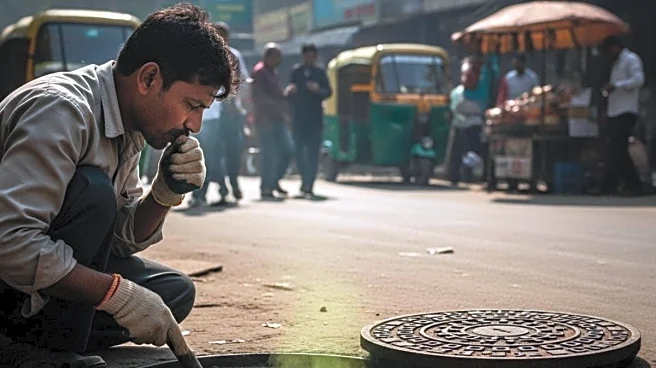What is the story about?

There
has been a sudden surge in cases of hand, foot, and mouth disease, or HFMD, among children across Delhi and Haryana, according to health officials. This common, viral illness causes high fever and painful sores in the mouth, accompanied by a rash of red spots or blisters on the hands and feet, and spreads easily among young children through direct contact. Experts emphasize that while the condition is not life-threatening, early identification and home-based care help facilitate a smoother recovery and prevent further spread. HFMD also leaves very visible marks on the body, making it easier to spot if one knows what to look for.
What is HFMD?
HFMD is a highly contagious illness caused by Coxsackievirus A16 and Enterovirus ATI. The disease gets its name from the blister-like rash that forms on your child’s hands and feet and the painful sores that develop in their mouth. The rash can appear anywhere on their body, including their chest, back, arms, legs, genitals, and buttocks. According to doctors, infants and children younger than 5 years are more likely to get the infection, which spreads at lightning speed among those in daycares and schools. Still, older children and even adults can also get it since several viruses can cause the disease. Hand, foot, and mouth disease is typically mild and usually clears up on its own within seven to 10 days.Signs and symptoms of HFMD
Doctors say hand, foot, and mouth disease symptoms typically appear in two stages. When the illness starts, your child may get flu-like symptoms, like- Mild fever
- Sore throat, which becomes painful
- Runny nose and signs of a cold
- Severe stomachache
- Loss of appetite
- An itchy rash on the palms of your child’s hands, soles of their feet, elbows, knees, genitals, or buttocks.
- Painful mouth sores
- Swollen lymph nodes in the neck.
How does HFMD spread?
Experts say that since the disease is highly contagious, it can spread through:- Airborne droplets are released when an infected person sneezes or coughs openly.
- Contact with an infected person’s saliva or stool, and then touching your own body.
- Direct contact with an infected person’s blisters
- Kissing or hugging someone who has the virus
- Sharing eating utensils, cups, towels, or clothing
- Touching contaminated toys, surfaces, doorknobs, or other items and then touching your eyes, nose, or mouth.
Are there any serious complications of HFMD?
Doctors say even though serious complications from hand, foot, and mouth disease are rare, occasionally it can cause:Dehydration
Mouth sores can make drinking and eating extremely painful, so it is essential to stay hydrated by consuming enough fluids.Nail loss
Many children lose a few fingernails or toenails after contracting the virus, even though the nails may regrow later.Viral meningitis and encephalitis
A very small number of kids with hand, foot, and mouth disease develop meningitis and encephalitis. These rare conditions cause dangerous swelling of the brain (encephalitis) and the brain and spinal cord membranes.Ways to prevent HFMD
Since it is a highly contagious condition, doctors advise you to prevent the infection from spreading. For that, a few steps you can take include:- Cough or sneeze into your elbow
- Disinfect high-touch items, such as toys, countertops, and doorknobs
- Stop sharing utensils, cups, towels, blankets, or clothing
- Keep infected children away from healthy children
- Wash your child’s clothing, bedding, and any other soiled items
- Wash your hands often with soap and water for at least 20 seconds
Do you find this article useful?
/images/ppid_a911dc6a-image-175829362439883912.webp)




/images/ppid_59c68470-image-175817262514076170.webp)

/images/ppid_a911dc6a-image-175826572956083007.webp)



/images/ppid_a911dc6a-image-175808922898417597.webp)




/images/ppid_a911dc6a-image-175807863305057652.webp)